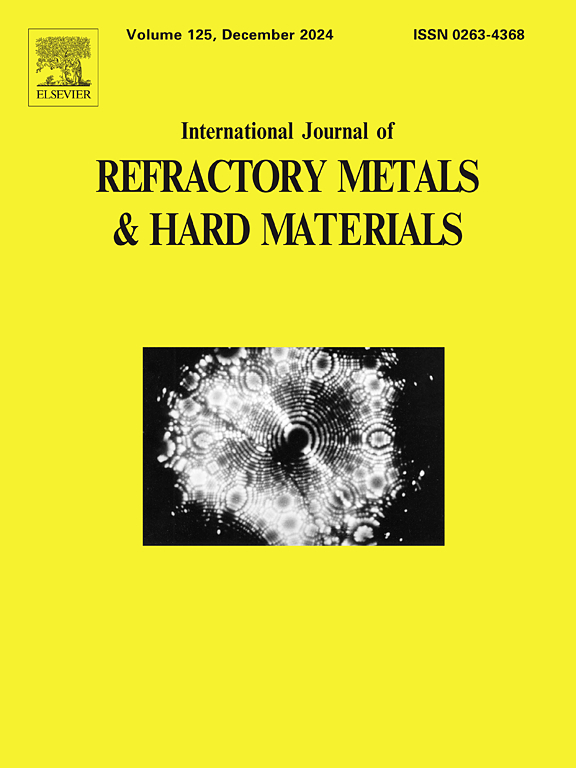Effect of thermal residual stress on the impact failure of PDC in application
IF 4.2
2区 材料科学
Q2 MATERIALS SCIENCE, MULTIDISCIPLINARY
International Journal of Refractory Metals & Hard Materials
Pub Date : 2025-01-27
DOI:10.1016/j.ijrmhm.2025.107078
引用次数: 0
Abstract
In the application of polycrystalline diamond compact (PDC) bits, more than 90 % of PDC cutters premature failure is directly or indirectly caused by excessive impact. During the different impact failures, the thermal residual stress plays a different role. In this study, PDC specimens—designated S1, S2, and S3—were fabricated using intial diamond powders of varying grain sizes (12 μm, 15 μm, and 18 μm, respectively) and a YG16 tungsten carbide substrate at 1500 °C and 7 GPa. A new method was selected by understanding the deformation of different sections of the PDC blanks after sintering to observe and calculate the thermal residual stress at the interface. The result shows that S2 exhibits the lowest thermal residual stress (0.26 GPa), representing a reduction of 73 % and 56 % compared to S1 (0.92 GPa) and S3 (0.59 GPa), respectively. To further evaluate the effects of thermal residual stress, impact tests simulating drilling conditions were conducted. The test result shows that the thermal residual stress at the interface has little effect on the transverse impact resistance, but has a significant effect on the longitudinal impact resistance of PDC. Additionally, the distribution of cobalt (Co) within the PCD and the state of transition layers between PCD and substrate also reflects the magnitude of thermal residual stress. The microstructure shows initial crack formation tends to occur at the interface and then propagate along the gradient lines of residual stress concentration.
求助全文
约1分钟内获得全文
求助全文
来源期刊
CiteScore
7.00
自引率
13.90%
发文量
236
审稿时长
35 days
期刊介绍:
The International Journal of Refractory Metals and Hard Materials (IJRMHM) publishes original research articles concerned with all aspects of refractory metals and hard materials. Refractory metals are defined as metals with melting points higher than 1800 °C. These are tungsten, molybdenum, chromium, tantalum, niobium, hafnium, and rhenium, as well as many compounds and alloys based thereupon. Hard materials that are included in the scope of this journal are defined as materials with hardness values higher than 1000 kg/mm2, primarily intended for applications as manufacturing tools or wear resistant components in mechanical systems. Thus they encompass carbides, nitrides and borides of metals, and related compounds. A special focus of this journal is put on the family of hardmetals, which is also known as cemented tungsten carbide, and cermets which are based on titanium carbide and carbonitrides with or without a metal binder. Ceramics and superhard materials including diamond and cubic boron nitride may also be accepted provided the subject material is presented as hard materials as defined above.

 求助内容:
求助内容: 应助结果提醒方式:
应助结果提醒方式:


